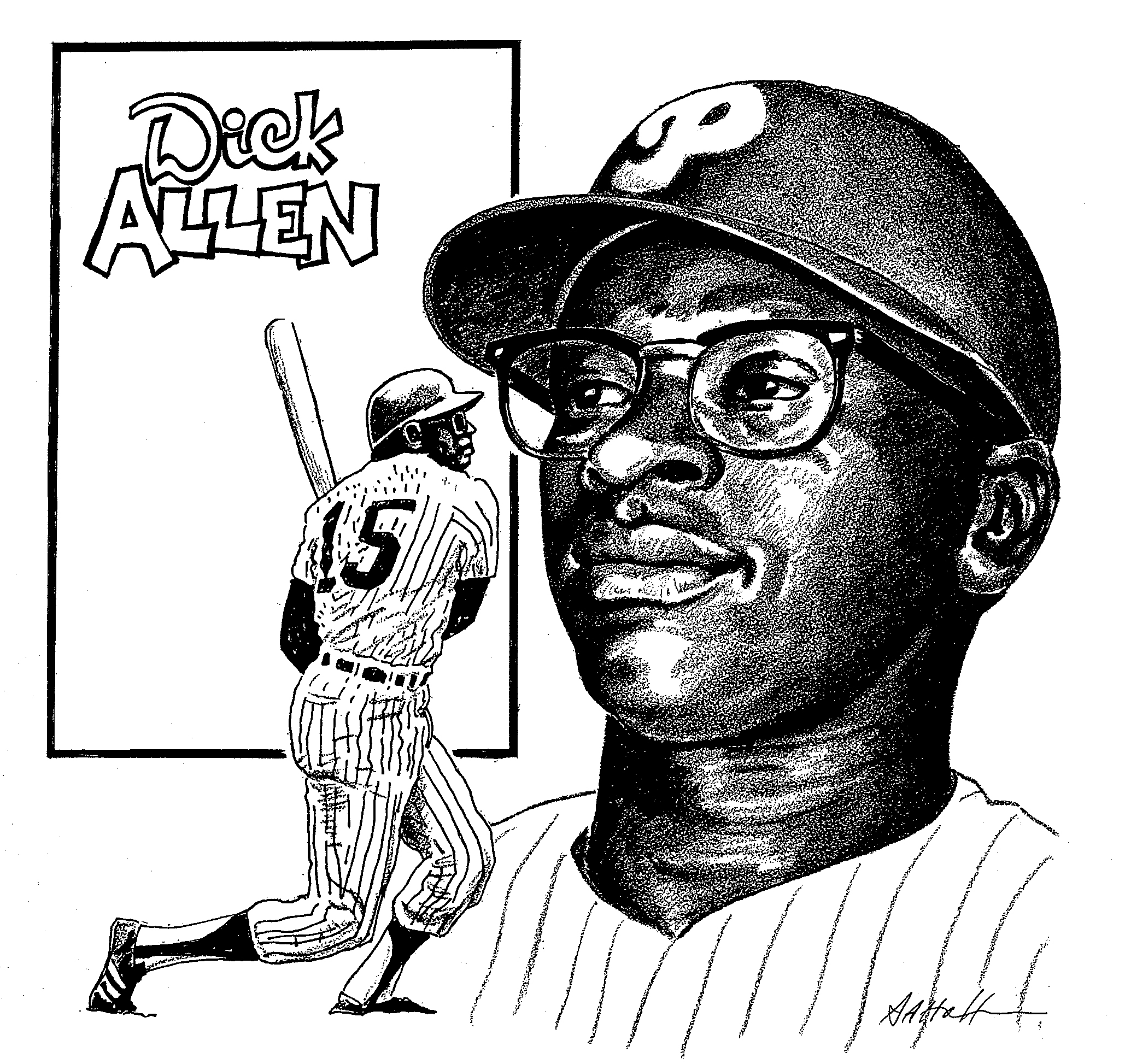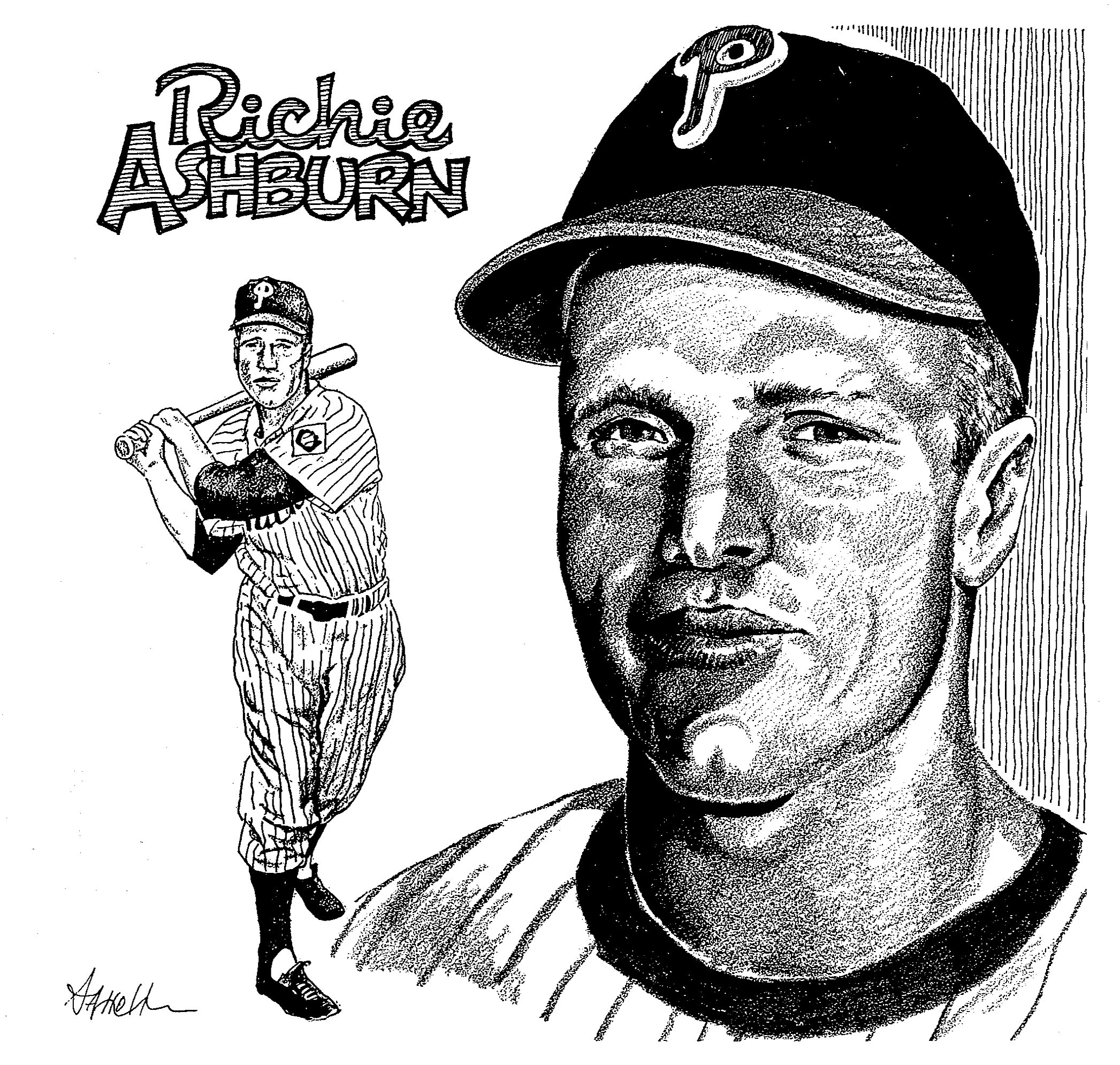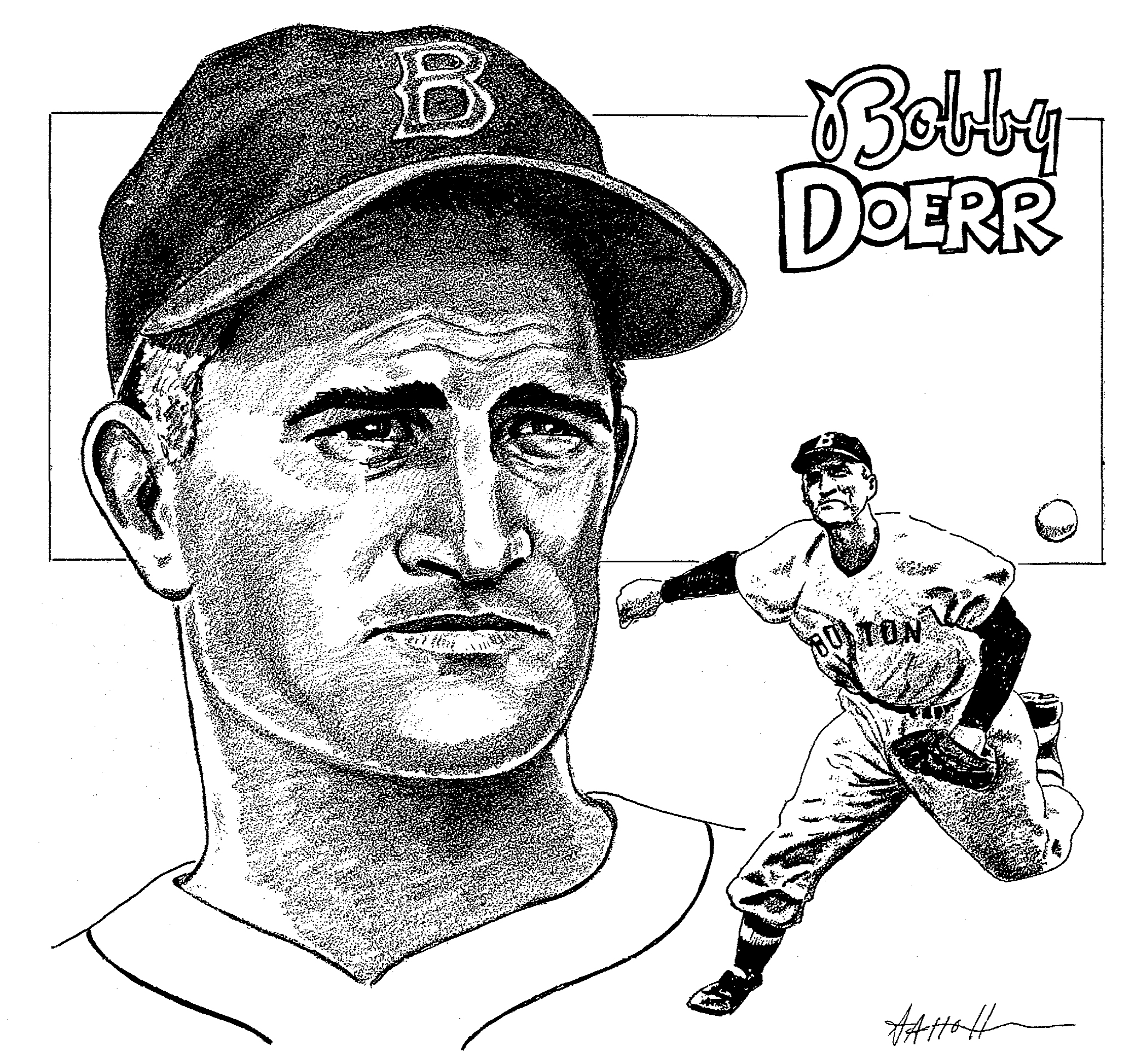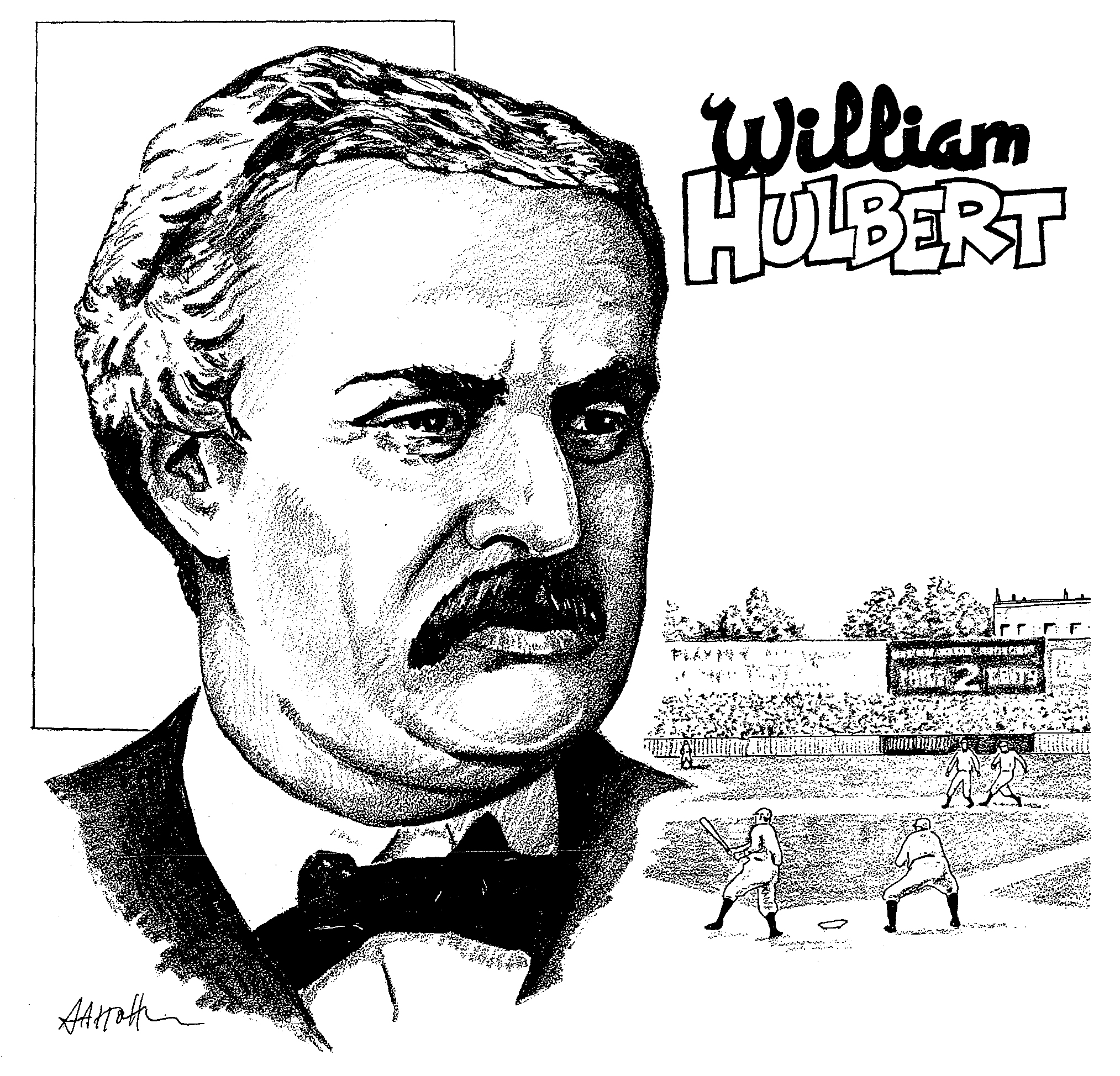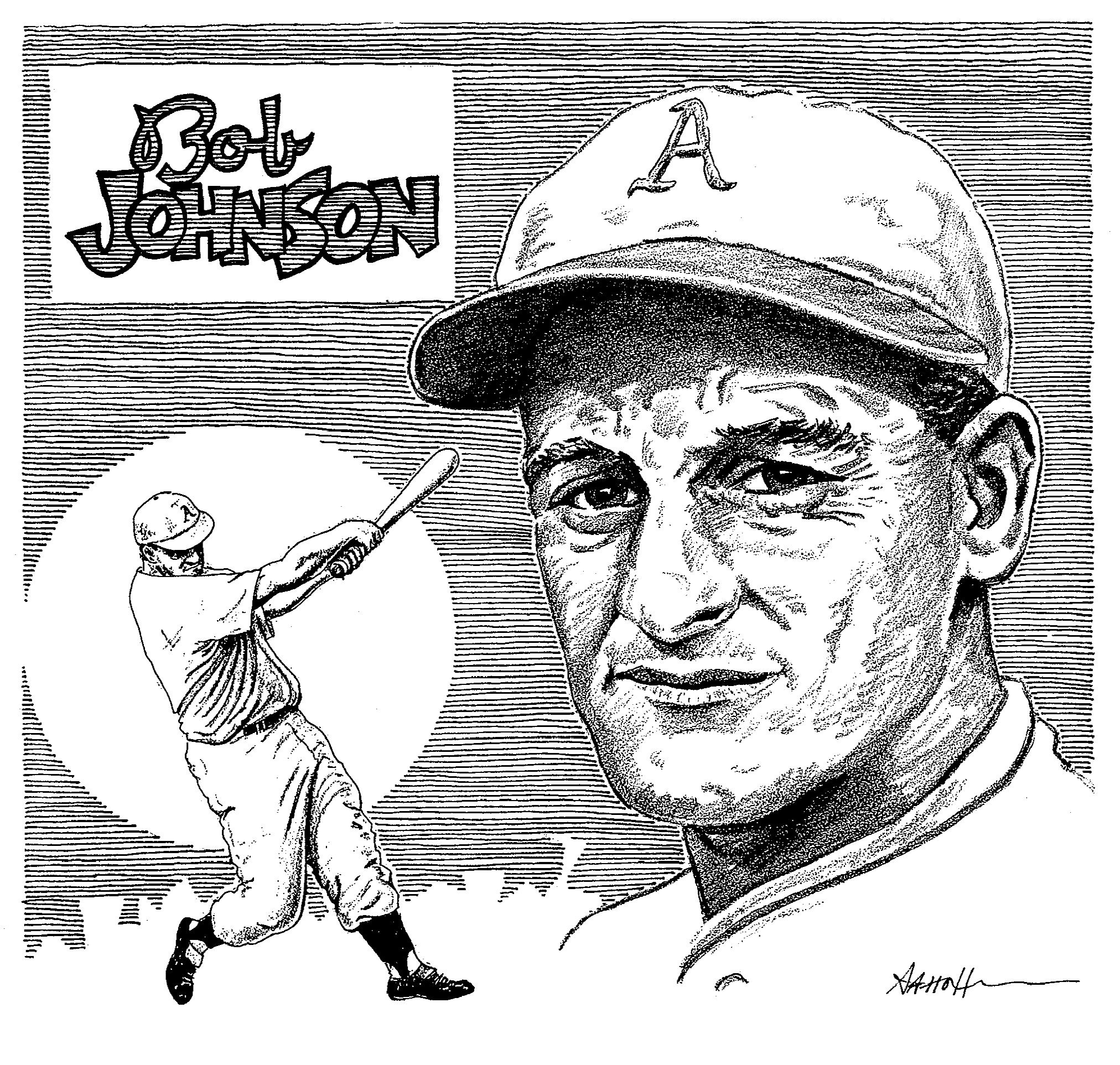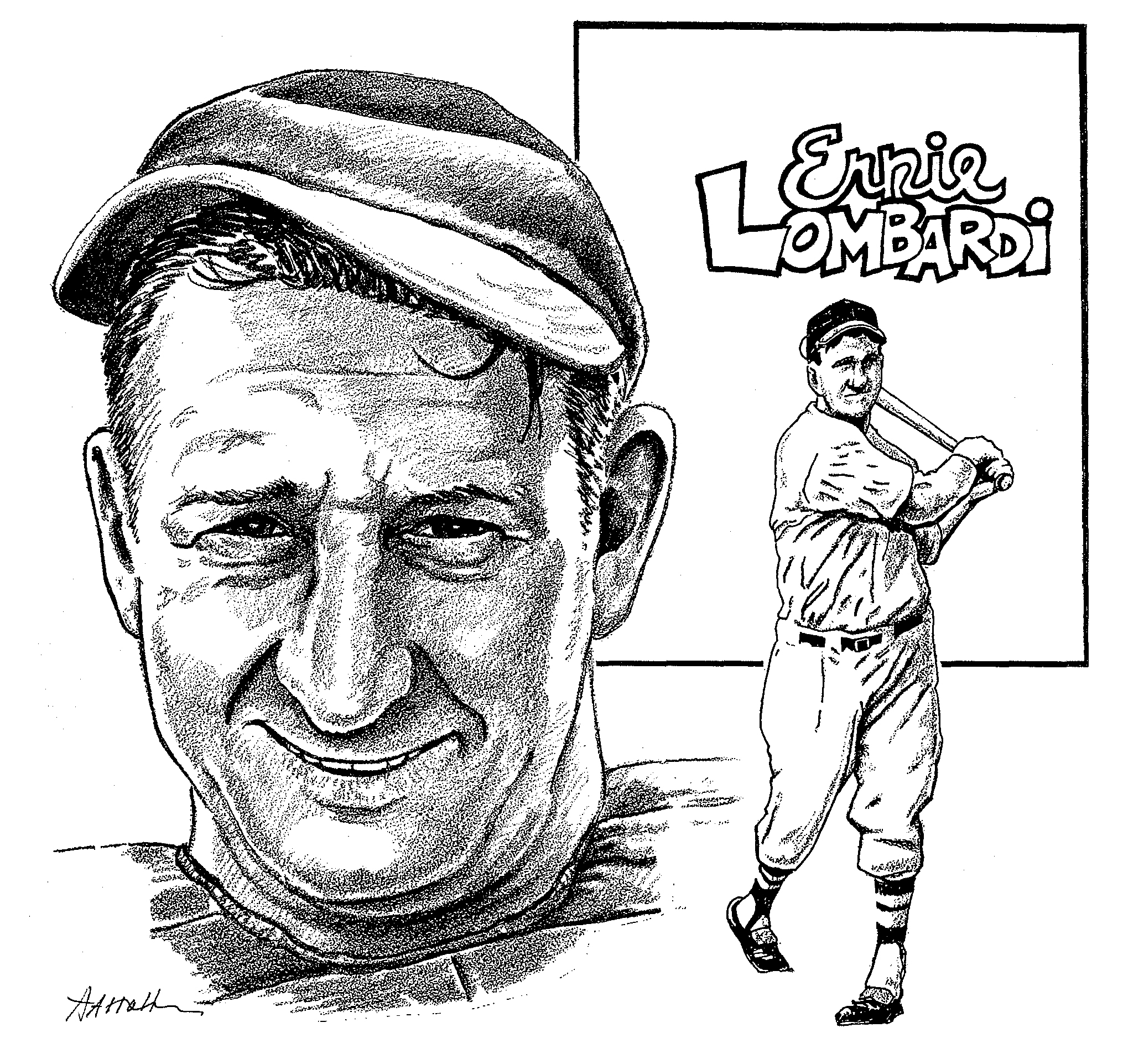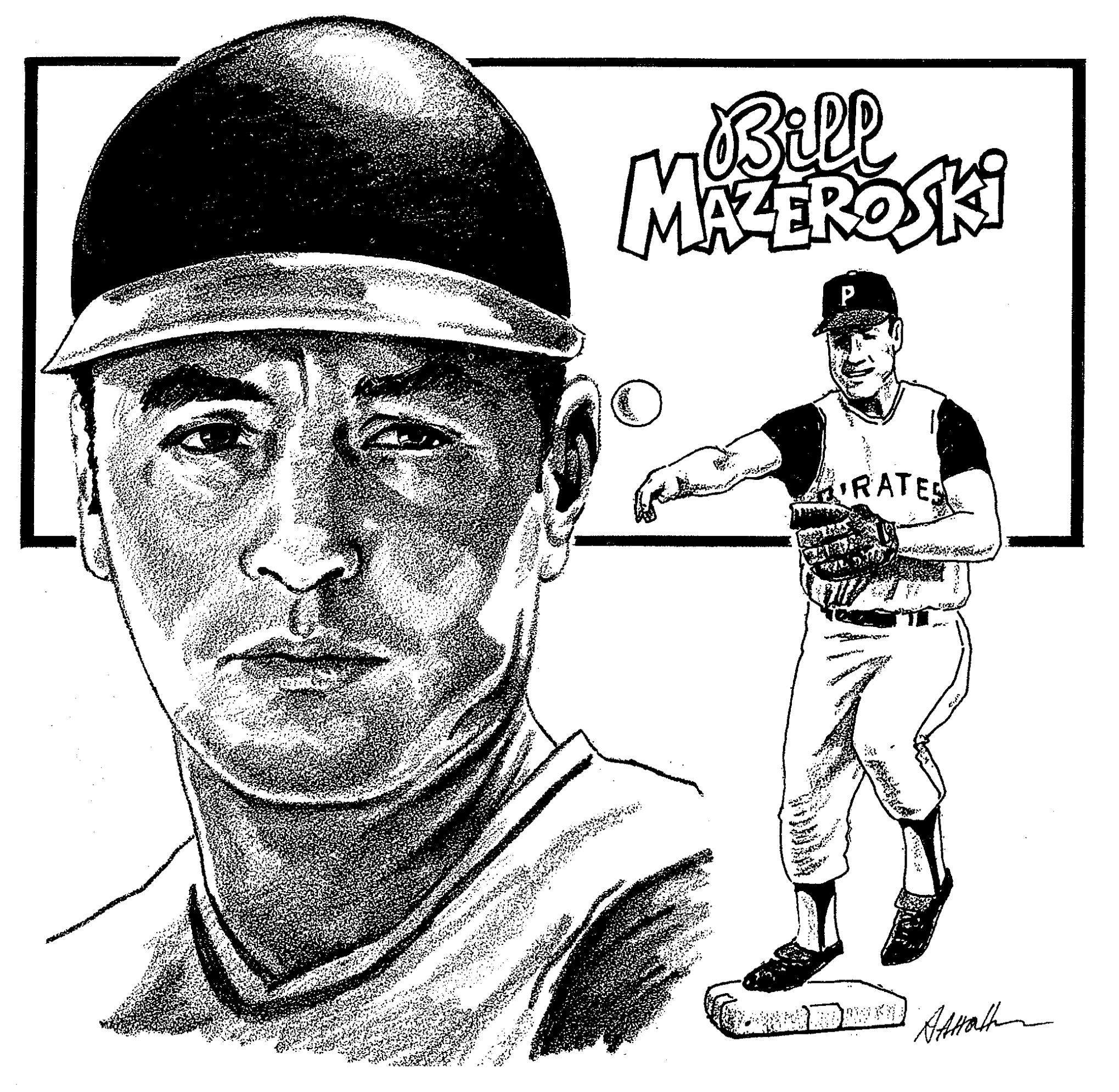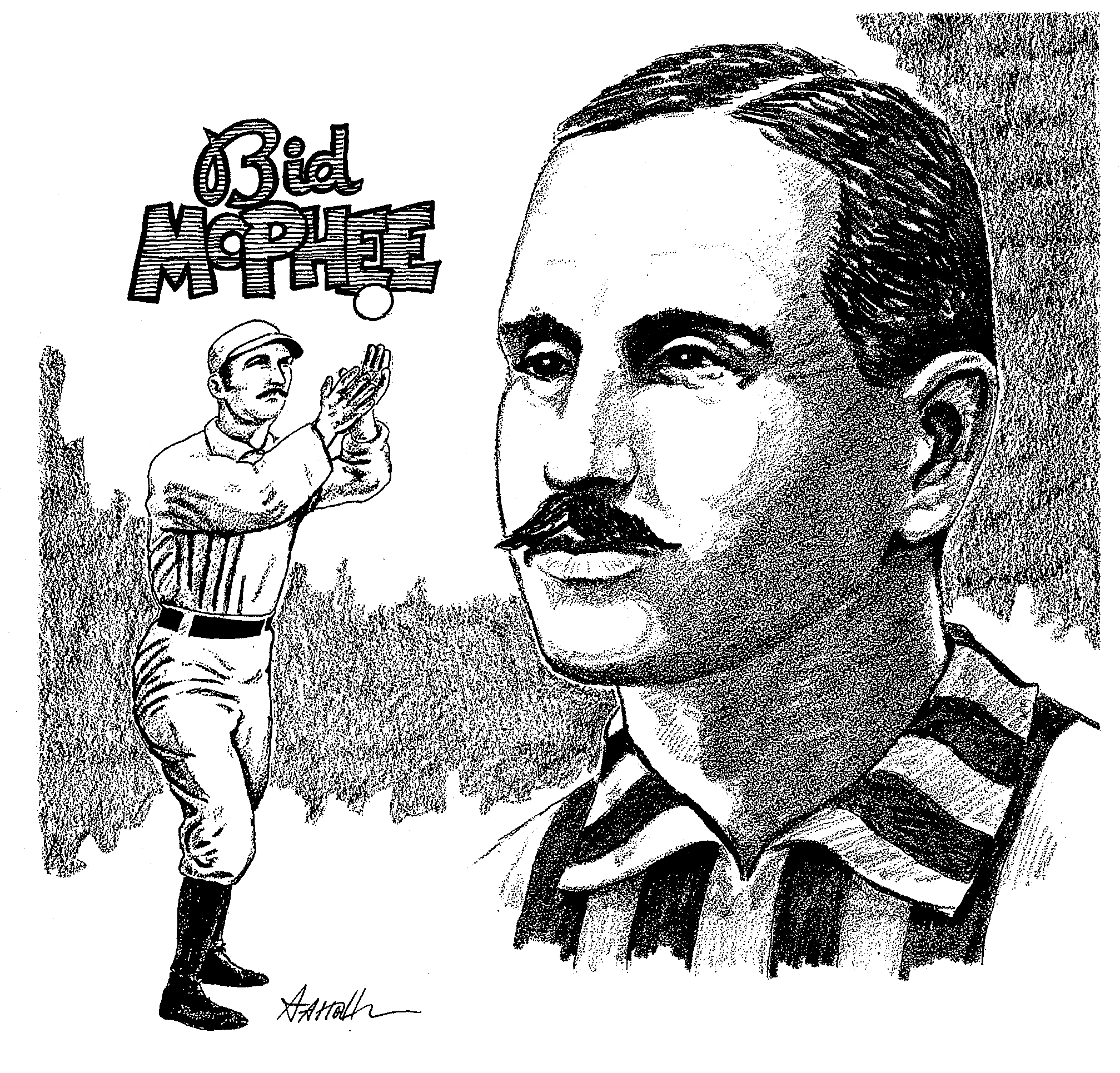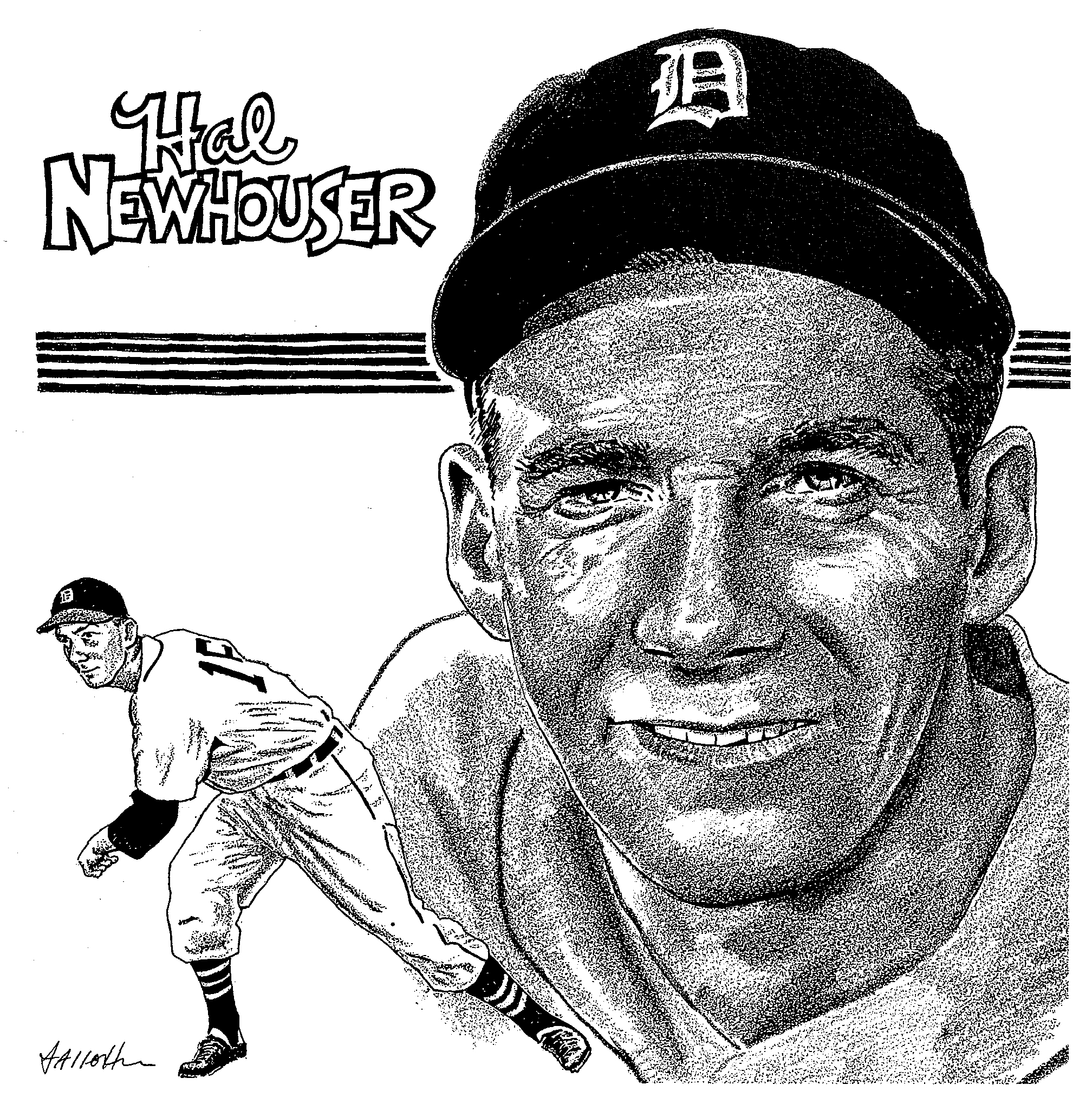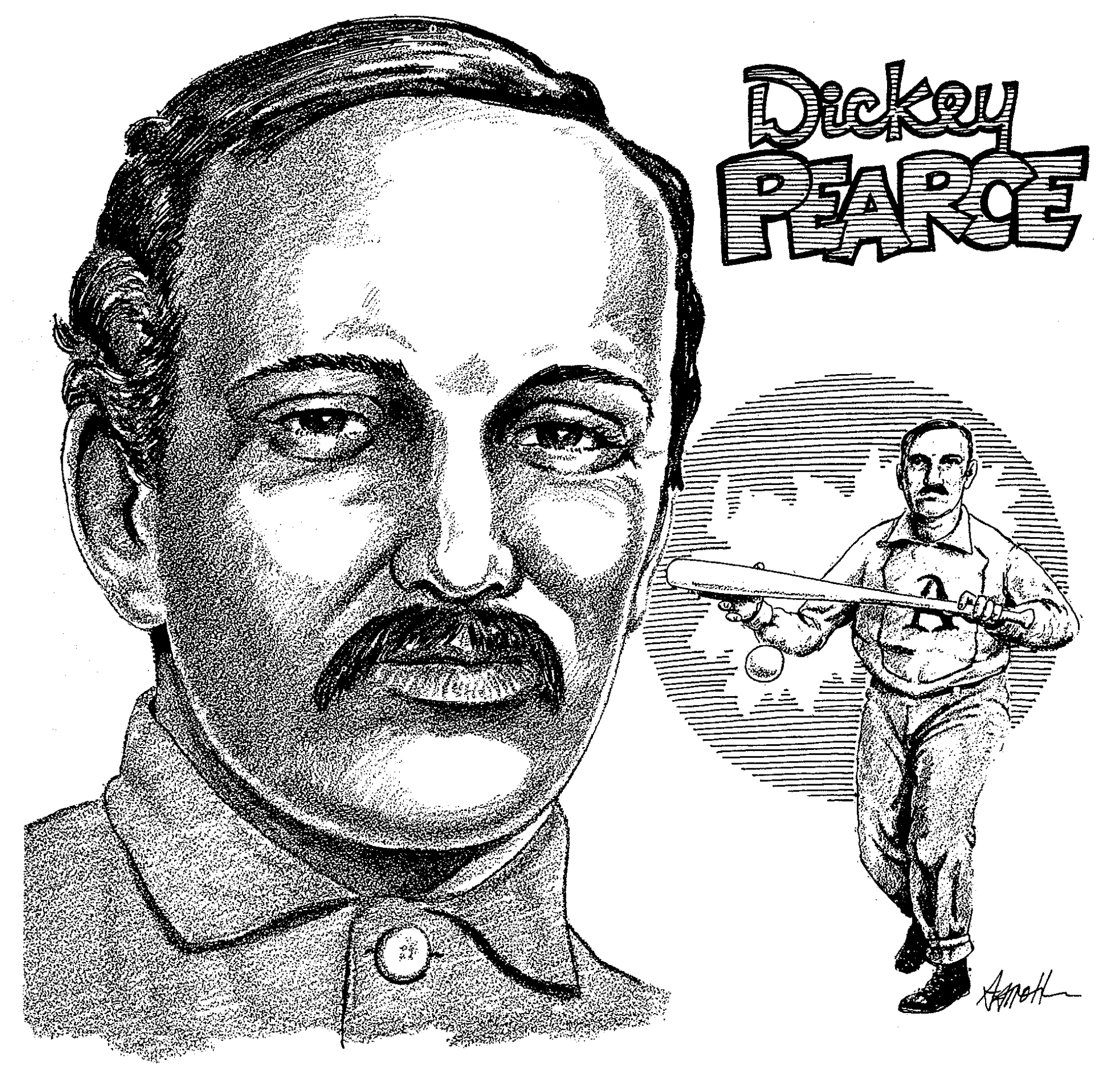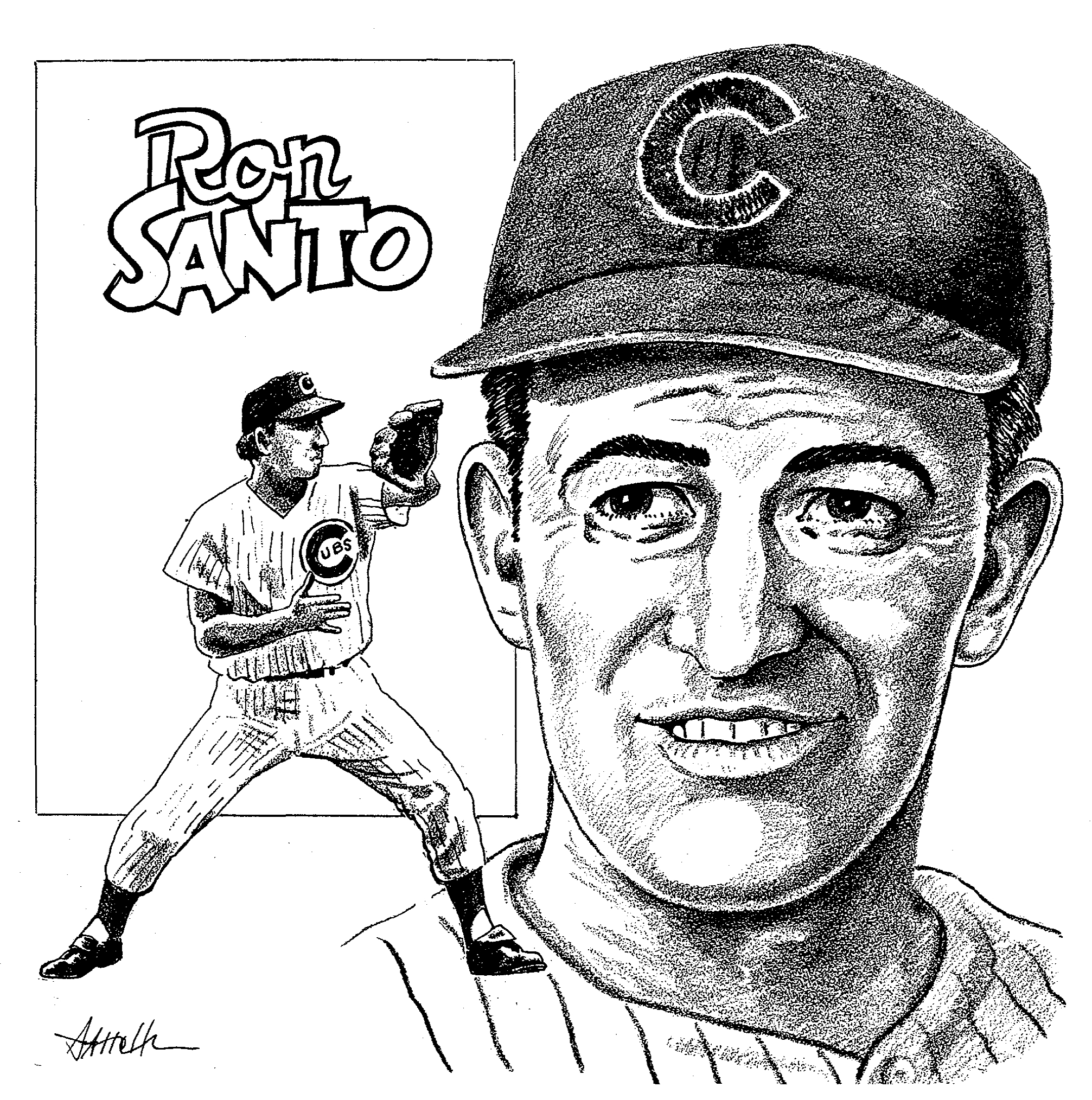For The Hall of Fame: Twelve Good Men
This article was written by Bob Carroll
This article was published in The National Pastime: Classic Moments in Baseball History (1987)
This article was originally published in SABR’s The National Pastime, Winter 1985 (Vol. 4, No. 2).
Back in the days when I could claim my local race track as a dependent, I always played longshots. Understand, a longshot wasn’t a horse that just might finish ahead of the field—a good longshot was a splendid steed that was bound to win, despite having been ‘overlooked by handicappers with less insight than I. The satisfaction of watching a correctly tabbed longshot cross the wire first was infinitely preferable to that of winning with the mob. The money wasn’t bad either. At least, it wouldn’t have been bad had any of my choices done what they were supposed to do.
I still think my reasoning was sound, although the horses never quite got the hang of it. I know they tried. In fact, many of them paused to think it over just before the homestretch. If there was a flaw in my system, it was that I had to make my bets before they ran the races.
All of which brings me to baseball’s Hall of Fame. In effect, we can place our bets on the candidates for enshrinement after the races are in the record book. We can wait until a guy has thrown his last pitch or swung at it before we say: “That man belongs in Cooperstown!” If baseball chose its Hall of Fame candidates the silly way race tracks rank their horses, we’d have to start casting plaques when a kid was still in AAA.
We can do a whole lot better picking baseballers than bangtails. Not only are most baseball players smarter than horses, but we can know much more about them. We can ask them questions and some of them will answer. More important, we can measure their performances in a greater variety of ways, under a wider diversity of circumstances, and on a larger number of occasions. Horses only run; ballplayers run, hit, throw, and field. And horses don’t have a 162-race season.
Of course, ways of measuring player performance are older than my blue serge suit. Anyone who can’t figure a batting average or an earned run average (and quote a whole passel, too) is unlikely to be reading these words. We all grew up with the same magic numbers: .406, 60, 56, 25 (the used-to-be price of The Sporting News), and all the rest. I still remember an old telephone number with 5442 as the final digits because Ralph Kiner hit 40 and then 54 home runs in 1948 and 1949. I just put them in reverse order and added the number of seasons. I’ve forgotten whose number it was.
With the advent of Bill James in his Abstracts, Pete Palmer and his Linear Weights System, and the rest of the hardworking sabermetricians, we have X-number of fascinating new measuring tools. And fascinating new measurements.
Let me define my terms, as Noah Webster once remarked. When I call a Hall-of-Fame longshot, I don’t mean Smead Jolley or Mario Mendoza. I’m pointing to someone who deserves to be in Cooperstown before the next elephant gestates and—in the best of all possible worlds—would already be residing there had he but caught the fancy of a coterie of opinion-makers.
On these pages, I’ll present my top twelve HOF longshots. Why twelve? Not because I prefer keeping my shoes on while I count, but because twelve is a traditional and even mystical number, i.e., twelve apostles, twelve good men and true, twelve chairs, and the Dirty Dozen. With twelve longshots, we get the cream.
Although all my longshots are eligible for the Hall right now, none of them has been the recent recipient of heavy fanfares. Such present favorite non-enshrinees as Billy Williams and Nellie Fox are off my list because they’ve been plentifully trumpeted for election of late.
I’m not including Harry Stovey either. His candidacy has been presented so vehemently and convincingly by some SABR members he has to rate at even money.
However, now that I’ve brought old Harry up, I might, as well throw in a little sidebar about Hall of Fame deliberations. Every year the time frame viewed by the Committee on Baseball Veterans expands. New veterans become eligible while those once passed over are reconsidered. The job is expanding like a runaway balloon.
It seems to me they should set a cut-off year—one that falls within the area of experience for most of the committee members—and say, “That’s it! No one who retired before this year will be considered again.” As a cut-off year, 1920 comes readily to mind, but I’m not locked into it; I just want to eliminate some of the clutter. If they’d like to hold one last giant election to take care of all the eligibles who retired before their chosen date, that would be all right with me.
As a matter of fact, four of my longshots are pre-1920 eligibles, and I’d hate to see them scratched. Nevertheless, something should be done to make the work of the Veterans Committee—an awesome and thankless task at best—at least theoretically possible.
But enough of improving the system! It’s time to get on with my duty—presenting a dozen deserving longshots for the Hall.
DICK ALLEN
Rugged individualism is more admired at a distance than up close and personal. Had Dick Allen played fifty years ago, he might be lauded today as a shining example of American independence. Instead, his moodiness, self-absorption, and free-and-easy approach to baseball make him anathema to many. His plaque in Cooperstown will diplomatically avoid his personality quirks. Besides, there’s more to say about his play than about his playing around.
From the time he won Rookie of the Year honors with the Phillies in 1964 through the mid-’70s, he was a slugger to make pitchers cringe. Six times he topped 30 homers in a season. His RBI totals looked like I.Q. scores for the smart class even though his teammates seldom clogged the bases in front of him. He was figuratively, and all too often literally, a one-man gang.
That was never more clear than in 1972 when his bat hoisted a very ordinary White Sox club into the thick of a pennant race. They gave him the MVP Award that year because there wasn’t anything higher.
In the field, Allen was never a surgeon but hardly a butcher. He started at third with the Phils and ended up at first with the A’s. In between, he played some second, outfield, and even shortstop.
He was special because of his bat. In an era of low batting averages, he finished with a fine .292. More important, his 351 home runs, 1,119 RBIs, and 1,099 runs scored have him up with the big kids who played longer.
In Palmer’s Linear Weights System, Allen ranks 40th in overall player wins, just ahead of Bob Johnson, about whom more later. The next eight below these two are already in the Hall of Fame.
RICHIE ASHBURN
They said Richie Ashburn would have been the perfect player if he’d had home run power or a good arm. He never did do much for homers, averaging fewer than two a season, but ask Cal Abrams about his arm. In the ninth inning of the final game of the 1950 season—with the pennant on the line—Ashburn gunned down Abrams at the plate to preserve a tie. The Phillies won the flag in the tenth.
Abrams was in good company. Ashburn led N.L. outfielders in assists three times and averaged better than ten a season for his fifteen-year career.
Besides catching baserunners he caught basehits, or rather potential basehits. No modern center fielder who played in more than 2,000 games ever went and got ’em like Richie. Palmer’s LWTS ranks him 16th in defensive wins, ahead of all outfielders except Speaker and Carey.
He led N.L. flychasers in chances per game every year from 1948 through ’58 save ’55 when he finished second by point-one. His career chances-per-game average of 3 is well ahead of his more celebrated and tuneful contemporaries Willie, Mickey, and the Duke. Put it this way: Over a 162-game season, Ashburn would catch about 50 balls that Mays wouldn’t get to. That’s a lot of basehits obliterated.
If we could add those hits to Richie’s offense, he’d go off the scale. Not that he had to hide his head when it was bat time. He led the N.L. in hitting twice and finished with a career .308. His ability to draw walks—he led four times in free passes—pushed his career on base average to nearly .400, marking him as one of the best leadoff men since Adam.
Had he hit home runs, he’d have been Roy Hobbs.
BILL DAHLEN
For a couple of months in 1978, everyone in baseball was saying, “Who’s Bill Dahlen?” The occasion for all the head scratching was Pete Rose’s consecutive-game hitting streak. As Pete’s total· mounted, it was noted he was near to tying Dahlen’s streak of 42 set in 1894. Once that landmark was passed, all eyes focused on Willie Keeler’s 44 in ’97, and Dahlen was dimly remembered as a slugger from the misty past.
That impression was wrong. Dahlen could hit all right. Although his most common batting average was in the .260s, he put together a couple of marks a hundred points higher early in his career. Over his twenty-two years in the bigs he scored 1,589 runs and batted in 1,223, even leading in ribbies in 1904. He also stole 547 bases.
But if Bad Bill is to be remembered correctly, it should be as a grounder-gobbling shortstop on four National League pennant winners between 1899 and 1905. Today, a shortstop who can hit is a bonus, but one who can’t field is a DH. Fielding was even more important in Dahlen’s day. The ball was deader than Caesar on March 16, and the surest route to first base was to smash that pill into the dirt. A premium was on an infielder’s ability to grab and throw. Dahlen was top drawer all the way.
His figures are impressive. Among shortstops of all eras, he’s 1-2 in career putouts, assists, and total chances. His 6.3 chances per game ranks him third—ahead of Honus Wagner.
BOBBY DOERR
The Boston Globe didn’t stop their presses whenever Bobby Doerr made an error, but they probably got more stories about men biting dogs. Lots of players have gone three months without making an error—November, December, and January—but Bobby did it at the height of one of the American League’s hottest pennant races. From June 24 to September 19, 1948, he handled 414 chances flawlessly.
In six different seasons he led A.L. second basemen in fielding, and his putout, assist, and double play totals were always at or near the top.
However, any resemblance to the “good field, no hit” stereotype ceased when Doerr picked up the lumber. He packed his .288 lifetime batting average with 223 home runs and 1,247 ribbies.
Bobby was an integral part of the murderous Red Sox lineup of the late 1940s—one that featured Dom DiMaggio, Johnny Pesky, Junior Stephens, and Ted Williams. Perhaps the big bats that surrounded him kept Doerr from getting his full due. A single pearl seems less radiant in a necklace than alone on a satin pillow. Worse, the Red Sox necklace looked like a choker when Boston was nosed out of several A.L. pennants. All those frustrating second-places clouded Doerr’s luster in some minds.
Needless to say, none of those minds belonged to the trembling pitchers who had to face him or the frustrated batters who tried to chop one past him.
Bobby ranks 26th overall in Palmer’s LWTS. How many players with Hall of Fame eligibility rank higher?
None.
WILLIAM HULBERT
When William Hulbert died in 1882, the National League passed a resolution “that to him alone is due the credit of having founded the National League, and to his able leadership, sound judgment, and impartial management is the success of the league chiefly due.” That’s a lot to lay at any man’s door. Still, it’s true; without Hulbert, there wouldn’t have been a National League, and we can all shudder at what might have been in its place.
For those who don’t know the story, back in 1875 baseball had a sort of league called the National Association. It had a reputation that would embarrass the town harlot. Hard-drinking players were loaded on the field more often than the bases, gamblers knew tomorrow’s standing this morning, and the whole mess was about as disciplined as the theater crowd when the Bijou burned down.
In stepped Hulbert, a part-owner of the Chicago team, to outline for the western teams a new league brim full of integrity. Then he went to the wicked East and sold his idea to the clubs there. To make it more palatable, he let easterner Morgan Bulkeley act as figurehead president.
The clean league struggled through 1876. The public was wary. New York and Philadelphia saved money by skipping their final western tour. Bulkeley didn’t even bother making the December league meeting. Pretense was put aside; Hulbert became prexy and immediately expelled the eastern spoilsports.
He’d cowed the clubs. The next year, he sent a resounding message to the players by barring for life four Louisville players who’d been fixing games. That kind of tough leadership during his remaining years proved to the public that baseball belonged up there with Mom ‘and apple pie. The sport was on its way!
BOB JOHNSON
Consistency may be the hobgoblin of little minds, but it can also make certain ballplayers nigh unto invisible. Indian Bob Johnson never had one of those super seasons that make everyone sit up and whistle. While phenoms came, collected their MVP trophies, and faded, he just kept plodding along hitting .300, with a couple dozen homers and a hundred ribbies year after year. From 1933 through 1945, he ticked off those seasons like a guy punching a time clock. Ho-hum, another April. Time to start hitting.
Maybe someone might have noticed him had he played on a pennant winner or two. Johnson was stuck for most of his career with Connie Mack’s Depression A’s, a club that treated last place like swallows treat Capistrano. He hit with power and consistency, ran, threw, and fielded like a star, but his light was hidden under a bushel of Philadelphia losses.
Nevertheless, as though writ in that trick ink kids used to scrawl messages with, Johnson’s name suddenly pops into full visibility when those career-total lists are examined: 2,051 hits, 1,239 runs, 1,283 RBIs, and a solid .296 BA.
He’s exactly the kind of player sabermetrics benefits—an overlooked star whose accomplishments become manifest under the microscope of detailed analysis. The Ruths, Cobbs, Aarons, and Musials need a sabermetric imprimatur like Cosell needs a thesaurus. But did you know that Palmer’s LWTS ranks Indian Bob as the 41st best player ever? Of course, Palmer doesn’t factor in the hype.
ERNIE LOMBARDI
Some heroes have feet of clay; Ernie Lombardi had feet of lead. He was the slowest great player in any sport except chess. Fortunately, flat-out sprinting isn’t in the job description for catchers, and all the things a maskman is supposed to do Ernie did better than most.
He was the rock the Cincinnati pennant winners of’39 and ’40 were built on. A quiet strong man with enormous hands, he nursed his pitchers, intimidated baserunners, delivered key hits. His contemporaries Dickey, Cochrane, Hartnett, and Ferrell are already ensconced in Cooperstown; big Ernie ranked with them, and sometimes he came out ahead.
In 1938, he was named N.L. Most Valuable Player when he became only the second catcher ever to win a batting title. Then, to prove it was no fluke, he took another batting crown in 1942. The list of catchers who’ve won batting championships since is as long as the list of battleships berthed in Kansas.
Even though he had to bounce the ball off the scoreboard to get a leg hit, Lombardi finished his seventeen-season career with a .306 batting average. Infielders, knowing they could throw him out on anything they could reach, played back an extra twenty to thirty feet. Nevertheless, he generated such power with his peculiar interlocked-finger grip that his cannon shots still got through.
He had the kind of power that breaks seats in the upper deck, but he specialized in line drives rather than moon shots, so his home run totals were only in the teens. But, had he possessed the blazing speed of a tortoise, he’d have hit .400.
BILL MAZEROSKI
You have to start with the home run. When Bill Mazeroski smacked Ralph Terry’s pitch over the Forbes Field wall in the ninth inning of the seventh game to win the 1960 World Series, he carved an ironic monument for himself. Remembering Maz for his hitting is like remembering Dolly Parton for her elbows.
Not that he was a cipher. His respectable .260 for seventeen years with the Pirates kept rallies alive, and he had a penchant for clutch hits, twice topping 80 RBIs in a season. Six times he managed double figures in homers. Still, a whole team of Mazeroskis would score fewer runs than a roster of Joe Morgans.
Maz purchased his ticket to Cooperstown with defense. He was simply the best second baseman who ever put glue in his glove, coupling the hands of a magician with the range of a Magellan. Five times he led his league in putouts, nine times in assists, eight times in total chances. His .983 lifetime fielding average is barely a bad hop under the record.
He was the da Vinci of the double play. Other second sackers caught the shortstop’s toss and then threw; with Maz, the ball seemed to ricochet at lightning speed to first, earning him the nickname “No Hands:” He set the major league record for twin kills in a season (161), years leading (8), and in a career (1,706). If we named baseball situations like diseases, we’d call double plays “Mazeroskis.”
In LWTS, Maz ranks first in lifetime defensive wins. Of the top seventy-five seasons by a defensive player, Maz has six! Think of it this way: put Mazeroski on the same team with ANY second baseman in history, and the other guy gets to play left field.
BID McPHEE
Sabermetrician Bill James lists as one of his criteria for Hall of Fame selection: “Was he (in any given season) the best player in baseball at his position?” By that standard, John “Bid” McPhee qualifies for Cooperstown ad nauseam. In just about every one of his eighteen years before 1900, he ranked as the best second baseman around.
Cincinnatians turned down all bids for Bid and kept him in town for his full career, with teams in both the American Association and the National League. They knew they had a timely hitter with a sting in his bat. His 188 career triples would translate into a hefty heap of homers in a more modern era. All told, he batted in 1,067 runs and scored a bountiful 1,678.
But he was at his best when the other guys went to bat. From 1882 through 1896 he led his league’s second basemen in putouts eight times, assists six times, double plays eleven times, total chances per game six times, and fielding average nine times. In every one of those years, he led in at least one category and usually in several—but he never led in errors.
And remember, he piled up a record that would turn a modern green without wearing a glove. Only in his final three years, long after the glove became standard equipment, did he deign to cover his left hand with leather. In 2,125 games, Bid accepted 14,241 chances, and that comes to a greedy 6.7 per game. To put it another way, in the average Cincinnati game, he accounted for about one-fourth of their opponents’ outs. The only one involved in more outs was the scorekeeper.
HAL NEWHOUSER
Like General Patton, Hal Newhouser peaked during World War II. But conventional baseball wisdom holds as an article of faith that diamond doings during The Big One don’t count. In memory, major league rosters were peopled by one-armed geriatrics or pimply adolescents. If the Browns could win a pennant, real ballplayers would have won the Nobel Prize!
No one has yet suggested they take away Lou Boudreau’s 1944 batting title, but Newhouser’s brilliant 1944-45 record is always regarded as proof that the competition was strictly Little League. In case you’ve forgotten, Prince Hal lefthanded his way to a 29-9 mark in ’44 and backed that with 25-9, an ERA title, and a pair of World Series wins in ’45. In both seasons, he carted off the American League MVP Award.
Ah, but those were the War Years! Forget that Hal’s record would look good against even the girls from Sister Theresa’s. Forget that a jeroboam of evidence exists that the quality of wartime play was better than the jokesters want to remember. Forget that no other pitcher ever bookended MVP trophies. What did he do when the big boys came home?
Well, in 1946 he “slumped” to 26-9 with a 1.94 ERA. For the five years after the war, he averaged 19.6 wins. The man Ted Williams called one of the three toughest pitchers he ever faced was always a pretty good thrower. Back in 1940, at the ripe old age of nineteen, he put nine victories in the till for the pennant-winning Tigers. But, like a lot of lefties, he took a while to discover they only call strikes if the ball is over the plate. When he learned the knack in 1944, he blossomed into unbelievable.
Although a sore arm ended his career prematurely, his record—not even counting the War Years—makes him the best lefty of his decade.
DICKEY PEARCE
They’re always putting up statues of people who did things first. Somebody ought to carve a couple of life-size, 5’3″ replicas of Dickey Pearce.
The first should show him bunting. Dickey invented that little maneuver back in the days when they still spelled the name of the game with a space between base and ball. The rule then said the ball only had to land once in fair territory. He mastered the art of plopping the pellet down ‘twixt the lines and then having it skitter off to God-knows-where. Reportedly, he collected numerous doubles while fielders retrieved the ball from under spectators’ wagons.
When the National League was founded, Pearce was forty years old and had been one of base ball’s few “name” stars for more than half his life, mostly with the famous Brooklyn Atlantics. The bunts were a nice touch, but what made Pearce an 1860s superstar was his fielding.
His second statue should show him shortstopping a grounder. He was, as a matter of fact, the first to play what we would consider the shortstop position. Until Pearce came along in 1856, the “shortstop” was a fourth outfielder whose job was to catch flares (or whatever they called them in those days) and to take short throws from the deep outfielders and relay them to the infield. (The early ball was so light that no one could throw it more than 200 feet or so.) Dickey noticed that many more basehits were bouncing safely between second and third than were pop flies coming into his grasp in the outfield. Accordingly, he moved himself into the breach.
He probably got a few quizzical looks, but he got a lot more groundouts. Pretty soon, every shortstop followed his example. Nevertheless, during his long career—spanning the amateur, early professional, and league eras—no one did it better than the original short stopper.
RON SANTO
Many good things come in threes: Faith, Hope & Charity; ‘Reading, ‘Riting & ‘Rithmetic; Curly, Larry & Moe. But, for Ron Santo, being one of a terrific trio has thus far hexed his Hall of Fame chances. Not only was he the third wrecker in the Cub crew of Banks, Williams & Santo, but he was also one of the troika of great third basemen during the 1960s: Robinson, Ken Boyer & you-know-who. Some people seem to confuse the third slot with second-rate.
Because Robinson has already gone to Cooperstown, a few comparisons may be enlightening. Robinson played longer and won more Gold Gloves, but Ron played 2,243 games and picked up five Gold Gloves—despite having to compete with both Ken and Clete Boyer for the trinket.
Let’s do some comparative math, using Bill James’ idea of dividing games played by 162 and then dividing the result into career totals to get an “average” season.
- Robinson: 595 AB, 69 R, 159 H, 27 2B, 4 3B, 15 HR, 76 RBI, .267 BA
- Santo: 590 AB, 82 R, 163 H, 26 2B, 5 3B, 25 HR, 96 RBI, .277 BA
It doesn’t take a genius to figure out that a team with Santo at third base would score more runs than the same team with Robinson at third. It would take an awful lot of third base defense—Robinson’s strongest suit—to make up the difference. But remember, Santo was no slouch with the leather himself.
There are other factors to consider, of course. Some favor Robinson; some favor Santo. The point is, when all the evidence is added up, they run a photo-finish.
They’ll never convince me Robinson doesn’t belong in the Hall of Fame. I just say Santo should be there with him—along with my other longshots.
BOB CARROLL, artist, writer, actor, and teacher, was represented in the premiere issue of TNP in 1982.



